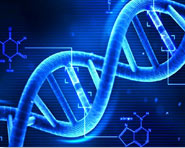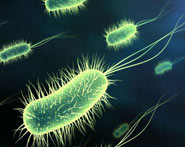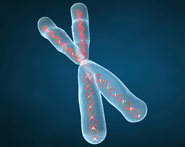


 النبات
النبات
 الحيوان
الحيوان
 الأحياء المجهرية
الأحياء المجهرية
 علم الأمراض
علم الأمراض
 التقانة الإحيائية
التقانة الإحيائية
 التقنية الحيوية المكروبية
التقنية الحيوية المكروبية
 التقنية الحياتية النانوية
التقنية الحياتية النانوية
 علم الأجنة
علم الأجنة
 الأحياء الجزيئي
الأحياء الجزيئي
 علم وظائف الأعضاء
علم وظائف الأعضاء
 الغدد
الغدد
 المضادات الحيوية
المضادات الحيوية|
Read More
Date: 25-12-2020
Date: 2025-04-10
Date: 2025-02-12
|
In the 1990s, the in vivo transfection of APCs in mice to induce primary adaptive immune responses initiated the development of DNA vaccines (Hobernik & Bros, 2018). Similarly, DNA administered directly to the skin and muscles of mice generated immune responses to the encoded antigen (Coban et al., 2013; Weiner, 2008). This led to the development and approval of the first veterinary DNA vaccine against Equine West Nile virus (WNV) in 2005. DNA vaccines enter cell nuclei where they are transcribed into RNA, which is then translated into the corresponding antigenic protein(s) in the cytoplasm (Lee & Nguyen, 2015). The antigens can be secreted to generate an antibody response and are also processed by the proteasome, leading to peptide presentation on cell surface MHC molecules and recognition by T cell receptors on naïve CD4 or CD8 T cells. Presentation can either be directly on the surface of transfected cells (somatic cells or professional APCs, e.g., dendritic cells) or cross-presentation following phagocytosis of transfected somatic cells by APCs (Ghaffarifar, 2018; Khan, 2013; Sun et al., 2021).
DNA vaccines also trigger innate immune responses: an unidentified cytosolic DNA sensor binds to transfected plasmids and triggers the TBK1 STING pathway. In this process, type I interferons are produced, which act as an adjuvant (Sun et al., 2021). DNA vaccines are easy and relatively inexpensive to produce, and have a longer shelf life (Hobernik & Bros, 2018). To date, only a few veterinary DNA vaccines have been approved . They include vaccines against Equine WNV (De Filette et al., 2012); infectious hematopoietic necrosis (IHNV) in salmon (Corbeil et al., 2000); canine melanoma (Liao et al., 2006); and the CLYNAVTM vaccine for Atlantic salmon (European Food Safety Authority et al., 2017). A conditional approval by the United States Department of Agriculture (USDA) has been given for the first commercial DNA vaccine against the highly pathogenic H5N1 influenza in chickens (Redding & Weiner, 2009).
Beyond prophylaxis, DNA can also be employed in therapeutic cancer vaccines. In this regard, personalized antitumor DNA vaccines can be made directly from biopsies, or synthesized following sequencing of tumor DNA and identification of potential neoepitopes (Lee et al., 2018). This topic is explored in more detail in the chapter on approaches to cancer vaccination. Other applications for this approach include the treatment of autoimmune and allergic diseases (Gutowska-Owsiak & Ogg, 2017; Wraith et al., 2003).
Historically, DNA vaccines have evoked low levels of immunogenicity, illustrated by the first clinical trials of vaccines for Influenza, HIV, malaria, and cancer (Weiner, 2008). Furthermore, immune responses generated in primate and large animal models are lower in comparison to those generated in small animals (Weiner, 2008). Various approaches have been taken to boost host cellular and humoral response to DNA vaccines (Coban et al., 2013; Weiner, 2008).
The efficiency of DNA vaccines can be improved by vector optimization, the introduction of nanocarriers and the attachment of virus-derived nuclear localization sequences. Vector optimization strategies include the use of APC-specific promoters, terminator sequences, inclusion of multiple antigen sequences, and the use of molecular adjuvants (Ghaffarifar, 2018; Lee et al., 2018). Nanocarriers can prevent extracellular DNA degradation, enhance endo/lysosomal escape of DNA, and enable APC targeting (Ghaffarifar, 2018). The use of specific localization sequences in the vaccine facilitates the entry of DNA into the nucleus for integration into the genome (Ghaffarifar, 2018; Karunamoorthi, 2014).
A major concern surrounding DNA vaccines is the possibility that foreign DNA might integrate to aberrant sites in the human genome leading to potential pathologies, including transformation to a cancerous phenotype. In the first two decades of the 21st century, DNA vaccines against HCV, malaria, Influenza, HIV-1, and cytomegalovirus have undergone various stages of human clinical testing (Weiner, 2008)
References
-------------
1- Hobernik, D., & Bros, M. (2018). DNA vaccines-how far from clinical use? International Journal of Molecular Sciences., 19(11), 3605. Available from https://doi.org/10.3390/ ijms19113605. Available from 30445702, PMCID: PMC6274812.
2- Coban, C., Kobiyama, K., Jounai, N., Tozuka, M., & Ishii, K. J. (2013). DNA vaccines: A sim ple DNA sensing matter? Human Vaccines & Immunotherapeutics., 9(10), 2216 2221. Available from https://doi.org/10.4161/hv.25893, Epub 2013 Aug 2. Available from 23912600.
3- Lee, S., & Nguyen, M. T. (2015). Recent advances of vaccine adjuvants for infectious diseases. Immune Network., 15(2), 51 57. Available from https://doi.org/10.4110/in.2015.15.2.51, Epub 2015 Apr 23. Available from 25922593.
4- Ghaffarifar, F. (2018). Plasmid DNA vaccines: Where are we now? Drugs of Today (Barcelona), 54(5), 315 333. Available from https://doi.org/10.1358/dot.2018.54.5. 2807864. Available from 29911696.
5- Sun, B., Zhao, X., Wu, Y., Cao, P., Movahedi, F., Liu, J., Wang, J., Xu, Z. P., & Gu, W. (2021). Mannose-functionalized biodegradable nanoparticles efficiently deliver DNA vaccine and promote anti-tumor immunity. ACS Applied Materials & Interfaces., 13(12), 14015 14027. Available from https://doi.org/10.1021/acsami.1c01401, Epub 2021 Mar 22. Available from 33751882.
6- De Filette, M., Ulbert, S., Diamond, M., & Sanders, N. N. (2012). Recent progress in West Nile virus diagnosis and vaccination. Veterinary Research, 43(1), 16. Available from https://doi. org/10.1186/1297-9716-43-16. Available from 22380523, PMCID: PMC3311072.
7- Corbeil, S., Kurath, G., & LaPatra, S. E. (2000). Fish DNA vaccine against infectious hemato poietic necrosis virus: Efficacy of various routes of immunisation. Fish & Shellfish Immunology, 10(8), 711 723. Available from https://doi.org/10.1006/fsim.2000.0286. Available from 11185755.
8- Liao, J. C., Gregor, P., Wolchok, J. D., Orlandi, F., Craft, D., Leung, C., Houghton, A. N., & Bergman, P. J. (2006). Vaccination with human tyrosinase DNA induces antibody responses in dogs with advanced melanoma. Cancer Immunity: A Journal of the Academy of Cancer Immunology, 6, 8. Available from 16626110, PMCID: PMC1976276.
9- European Food Safety AuthorityHouston, R., Moxon, S., Nogue ´, F., Papadopoulou, N., Ramon, M., & Waigmann, E. (2017). Assessment of the potential integration of the DNA plasmid vaccine CLYNAV into the salmon genome. EFSA Journal., 15(1), e04689. Available from https://doi.org/10.2903/j.efsa.2017.4689. Available from 32625277, PMCID: PMC7009875.
10- Redding, L., & Weiner, D. B. (2009). DNA vaccines in veterinary use. Expert Review of Vaccines, 8(9), 1251 1276. Available from https://doi.org/10.1586/erv.09.77. Available from 19722897, PMCID: PMC4425421.



|
|
|
|
التوتر والسرطان.. علماء يحذرون من "صلة خطيرة"
|
|
|
|
|
|
|
مرآة السيارة: مدى دقة عكسها للصورة الصحيحة
|
|
|
|
|
|
|
نحو شراكة وطنية متكاملة.. الأمين العام للعتبة الحسينية يبحث مع وكيل وزارة الخارجية آفاق التعاون المؤسسي
|
|
|